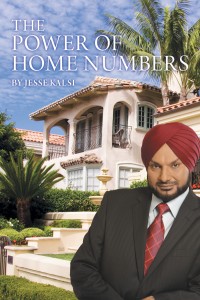A Lifetime of Sleep!
As human-beings we all need sleep. Just as every living animal does. But the amount of sleep we need, and the challenges that prevent us from getting the sleep we need, changes as we age.
Let’s start at the very beginning; newborns sleep from 16 to 20 hours a day. Of course, not all of the hours a baby sleeps are in a row – as new parents know very well! It can be challenging to get your little one into a sleep routine so that they sleep through the night, and their parents can, too. After 4 months, babies want to sleep through the night, but they might not know how. Here are some sleep strategies you might want to try:
- Avoid using a pacifier for nighttime sleep. Some babies start to depend on a pacifier to get to sleep. The problem is that when their binky falls out at night, they don’t have the fine motor skills to put it back in their mouth. At about 8 months of age they have enough dexterity to manage a pacifier on their own.
- Play some white noise. In utero, babies hear all kinds of muffled sounds, so they find this soothing. Use a fan, a white noise machine, or look online for some white noise MP3s to download.
- Work with your pediatrician to gradually cut back nighttime feedings so that baby doesn’t wake up and expect a bottle.
By 12 months of age Baby should be easily sleeping all through the night, for about 12 hours.
Toddlers will continue to take naps as they grow, but they will take fewer naps as they get older, and get all of their necessary sleep at nighttime by the time they reach six years of age.
When children outgrow their crib and move into their first bed they often want to delay bedtime and “stay up.” This is when sleep habits start, so it is important to get kids on a good sleep routine. It’s always a good idea to have your child participate in the bedding decisions so that they really love spending time in bed. Allow them to choose sheets with their favorite cartoon characters, for example, so they look forward to going to bed. It is important to purchase a new mattress for your child so that they are comfortable and supported during sleep.
Keeping in mind that grade school kids need between 10 and 12 hours of sleep a night, look at the time they need to wake up and work backwards to set their bedtime accordingly. A good routine to follow is the three Bs: Bath, book, bed. The bath will help them relax. The book will give them quality time with a parent where they read together. And then they’ll be ready to be tucked in with goodnight kisses.
There’s another change when children reach adolescence. People have a “circadian rhythm,” a kind of internal clock that cues us when to fall asleep and when to wake up. Hormonal changes seem to affect this cycle, causing teenagers to prefer both staying up later at night, and waking up later in the day. However, high school tends to start classes much earlier, so students struggle with having to get up before they feel that they’ve slept enough, and they get tired during the day. In addition, teens often spent time in artificial light, especially computer screens as they do homework late at night, making it more difficult to get to sleep when they finally turn in. Here are some sleep tips for teens and college students:
- Make sure to get some sunshine as much as you can every day. Also during the day, avoid caffeinated beverages, especially after 2 pm.
- Keep your bedroom cool, dark, and quiet. Power your computer completely off before you get into bed, and keep it on the other side of the room. If light bothers you, invest in some black-out shades, or wear a sleep mask. In the morning, open the curtains wide and turn on the light to wake up more easily.
- Take a warm bath or shower before bed to help you relax. It’s good to have some break between computer time and bedtime to help the brain prepare for sleep. Listen to some soft music and maybe do some easy yoga stretches.
- If you need a snack before bed, keep it small. Carbohydrates will help you feel warm and sleepy. Graham crackers, a piece of toast, or a few crackers and hummus are all good choices.
During the teen years kids are growing a lot, so make sure that their mattress is keeping up with them. Most college dorms provide extra-long twin beds for their students. However, your child is not obligated to use this mattress, feel free to provide your own to assure the quantity and quality sleep your student needs.
The older we get, the more likely we are to have sleep disturbances. Harvard University Medical School says that 7 out of 10 adults experience problems that affect sleep quality. Many of these sleep problems are particular to women, related to their cycle, pregnancy, new motherhood, or menopause. We have a more in-depth article about Women’s Sleep Issues posted on BetterSleep.org.
Chronic medical conditions that often come with age, such as arthritis, congestive heart failure, depression, and digestive issues can cause sleep problems. In addition, respiratory disorders can cause awakening during the night. Restless legs syndrome, which results in an uncontrollable need to move the legs while drifting off to sleep, makes it difficult to fall asleep, or stay asleep. One home remedy for RLS is putting a bar of soap under your sheets near your feet. No one knows why this works, but 40% of people who tried it said they had good results. You could use lavender soap to get the added benefits of the relaxing aromatherapy that comes with it. Fortunately, when any underlying medical disorders are treated sleep dramatically improves.
Because older adults have more trouble sleeping, they are more likely to suffer from chronic sleep deprivation, causing them to unintentionally nod off curing daytime activities. But sleep problems don’t have to be a part of aging, there are many solutions to help us sleep better. Here are some tips that can help:
- If a nap is required, keep it to the morning hours so that it doesn’t interfere with nighttime sleep.
- Let your doctor know when you are experiencing sleep difficulties so that you can work together to solve the problem.
- Make sure to get some exercise every day, both mentally and physically. Be up and active as much as possible in the day so that you can feel sleepy at bedtime.
If you are caring for an aging parent or grandparent, the best gift you can give them is that of a good night’s sleep. Look into their needs, and see if a mattress that elevates the head would be helpful for them.
At 115 years of age, Susannah Mushatt Jones was asked what her secret is for living such a long and healthy life. She said simply: “I sleep.” That is good advice for all of us, Susannah. We will follow your example. Thank you!











 Yes—and it’s huge
Yes—and it’s huge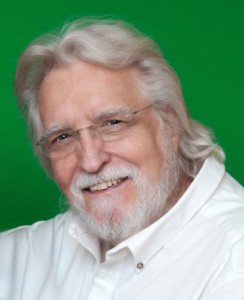
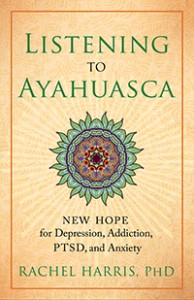 Guest post by Rachel Harris, PhD, author of LISTENING TO AYAHUASCA
Guest post by Rachel Harris, PhD, author of LISTENING TO AYAHUASCA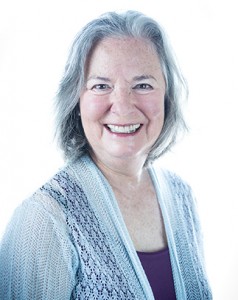 Rachel Harris, PhD, is the author of Listening to Ayahuasca: New Hope for Depression, Addiction, PTSD, and Anxiety. She received a National Institutes of Health New Investigator’s Award, has published more than forty scientific studies in peer-reviewed journals, and has worked as a psychological consultant to Fortune 500 companies and the United Nations. She lives on an island off the coast of Maine and in the San Francisco Bay Area. Visit her online at
Rachel Harris, PhD, is the author of Listening to Ayahuasca: New Hope for Depression, Addiction, PTSD, and Anxiety. She received a National Institutes of Health New Investigator’s Award, has published more than forty scientific studies in peer-reviewed journals, and has worked as a psychological consultant to Fortune 500 companies and the United Nations. She lives on an island off the coast of Maine and in the San Francisco Bay Area. Visit her online at 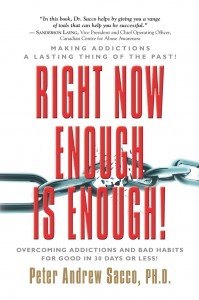 Have you ever heard of the Madonna complex? It has nothing to do with Madonna the entertainer. It is not some catchy “pop” psychology concept which sprung up overnight. Its legacy can be traced back to Sigmund Freud, the great Psychoanalyst and his psychosexual theories. Freud was a major believer in the notion that all human behaviour –wishes, dreams and gratifications, had a strong psychosexual basis.
Have you ever heard of the Madonna complex? It has nothing to do with Madonna the entertainer. It is not some catchy “pop” psychology concept which sprung up overnight. Its legacy can be traced back to Sigmund Freud, the great Psychoanalyst and his psychosexual theories. Freud was a major believer in the notion that all human behaviour –wishes, dreams and gratifications, had a strong psychosexual basis.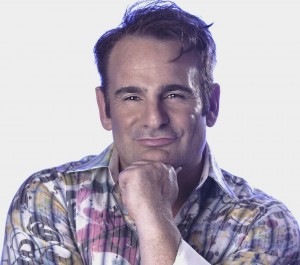 Dr. Peter Andrew Sacco is the author of many books including his new popular selling books; Right Now Enough Is Enough: Overcoming Addictions & Bad Habits and The Madonna Complex, and more than 800 magazine articles. Sacco is an award-winning lecturer at universities in both the USA and Canada, specializing in relationships, criminal psychology, addictions, and mental health. He is also a frequent resident expert on several television programs and appears regularly as a guest expert on many news talk radio shows in the USA (FOX, ABC, CBS, Iheart, Coast To Coast, Global News, Reader’s Digest etc.), as well as hosting the weekly radio show “Matters of the Mind: Managing Relationships and Mental Health.” He is also an award-winning executive producer and host of documentaries on relationships, psychological issues and child issues. You can learn more about him, or download free books at
Dr. Peter Andrew Sacco is the author of many books including his new popular selling books; Right Now Enough Is Enough: Overcoming Addictions & Bad Habits and The Madonna Complex, and more than 800 magazine articles. Sacco is an award-winning lecturer at universities in both the USA and Canada, specializing in relationships, criminal psychology, addictions, and mental health. He is also a frequent resident expert on several television programs and appears regularly as a guest expert on many news talk radio shows in the USA (FOX, ABC, CBS, Iheart, Coast To Coast, Global News, Reader’s Digest etc.), as well as hosting the weekly radio show “Matters of the Mind: Managing Relationships and Mental Health.” He is also an award-winning executive producer and host of documentaries on relationships, psychological issues and child issues. You can learn more about him, or download free books at  The other day someone asked me what my favorite gift was this holiday season. I didn’t hesitate to say, “The gift of good health for both my husband and me!”
The other day someone asked me what my favorite gift was this holiday season. I didn’t hesitate to say, “The gift of good health for both my husband and me!”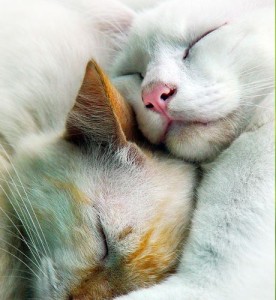
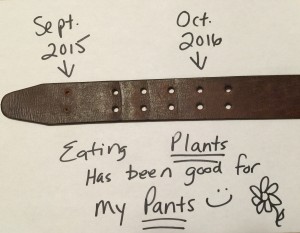
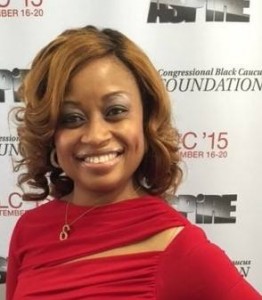 By Jacqueline A. Eubany, MD, FACC FHRS
By Jacqueline A. Eubany, MD, FACC FHRS